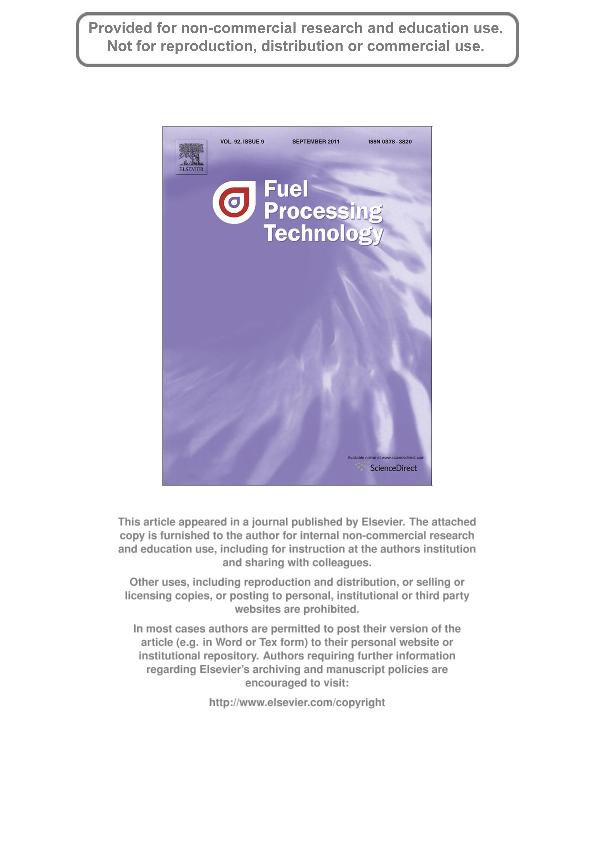Artículo
Optimal process conditions for the isomerization-cracking of long-chain n-paraffins to high octane isomerizate gasoline over Pt/SO4 2--ZrO2 catalysts
Fecha de publicación:
09/2011
Editorial:
Elsevier Science
Revista:
Fuel Processing Technology
ISSN:
0378-3820
Idioma:
Inglés
Tipo de recurso:
Artículo publicado
Clasificación temática:
Resumen
An assessment of the process conditions for the isomerization-cracking of long-chain n-paraffins over commercial Pt/SO42--ZrO 2 catalysts was made. Pretreatment and reaction conditions were optimized with a focus on the maximization of the yield of short, high octane branched paraffins for the gasoline pool. While selectivity was an important issue attention was also paid to the reduction of the yield to gases (C 1-C4). Therefore cracking had to be modulated to produce the correct molecular size adjustment without scission to too much smaller fragments. Skeletal isomerization was to be maximized. The activity in both acid-catalyzed reactions had to be tuned while keeping a stable activity level. The only pretreatment condition assessed was the calcination temperature (screened in the 600-800 °C range). Calcination at 600 °C produced the highest activity level while 700 °C was convenient from the point of view of selectivity. The optimum temperature coincided with the production of the highest concentration of Brönsted acid sites. Regarding the reaction conditions, increasing temperature values augmented the conversion but also increased the cracking. Therefore optimum values were found at a moderate temperature, 225 °C, given the high reactivity of the feed. Space velocity values were analyzed with attention to the liquid C5+ yield, the selectivity to branched isomers and the stability of the catalysts. Best yields to branched naphtha products were obtained at WHSV = 18 h- 1. The H2/hydrocarbon molar ratio was a function of the catalyst coking rate. A value of 10 was enough to attain a stable conversion value. The values of liquid yield as a function of pressure displayed a volcano pattern that was rationalized in terms of a non-classical bifunctional mechanism of reaction. High pressure values increased the concentration of Brönsted acid sites and hence the activity while high pressures enhanced hydrocracking and decreased the liquid yield. The optimal pressure value was 20 atm.
Archivos asociados
Licencia
Identificadores
Colecciones
Articulos(INCAPE)
Articulos de INST.DE INVEST.EN CATALISIS Y PETROQUIMICA "ING. JOSE MIGUEL PARERA"
Articulos de INST.DE INVEST.EN CATALISIS Y PETROQUIMICA "ING. JOSE MIGUEL PARERA"
Citación
Busto, Mariana; Vera, Carlos Roman; Grau, Javier Mario; Optimal process conditions for the isomerization-cracking of long-chain n-paraffins to high octane isomerizate gasoline over Pt/SO4 2--ZrO2 catalysts; Elsevier Science; Fuel Processing Technology; 92; 9; 9-2011; 1675-1684
Compartir
Altmétricas




